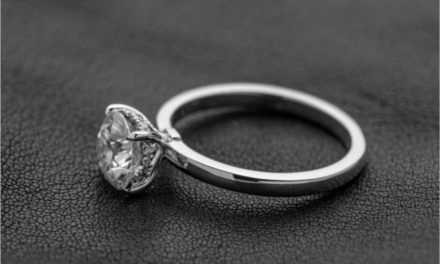The current office wear differs from the stuffy attire common in the past. Modern office attire has evolved alongside the changing workplace environments. Remote work and hybrid schedules brought an end to mandatory official dressing. However, informal work shifts aren’t an open invitation to wear anything in your closet.
While the easygoing dressing vibe is the new normal, you should make it a challenge to redefine your casual business dressing. Fortunately, Diesel Outlet is there to sort out your casual dressing needs. Below are a few unspoken rules to ace your casual dressing style for work, business meetings, night outs, and other outings.

1. The Suit Rule
Switching to casual business doesn’t mean dumping your suits. Whether you want a business casual or business formal fit, suits are versatile to make the cut. However, you should follow the following rules when choosing and wearing your suit:
- The fabric: Choosing the wrong fabric, like shiny and thin fabrics, makes you look like a door-to-door salesman instead of a savvy professional. Opt for good suit fabrics, such as cotton, linen, blends, and wool, depending on the event’s formality and season.
- The cut: Even with a high-quality fabric and design, choosing poor-fitting suits negates your appearance. Invest in well-tailored suits. They might cost a fortune, but they are worth every penny.
- Matching jacket and trousers: Your suit trousers and jacket should be made from the same fabric, color, and pattern for a cohesive look. Mismatched pieces give you an unprofessional and disheveled appearance.
- Consistent color: Like the fabric, the color of your trousers and jackets should be consistent. The best colors for business casual suits are black, navy blue, charcoal gray, and shades of brown.
- Don’t mix and match: While mix and matching is a stylish option in some situations, you shouldn’t bank on the odds of making the right color choices. Stick to the above suit rules on colors for professional or formal events.
2. The Shirt Rule
Shirts often get underestimated because they are covered by coats or jackets. Most people wear shirts to provide a backdrop to their trousers and jackets. However, shirts can transform your entire casual business look. Some shirt rules to consider include:
- Shirt style: Pick a style that suits the occasion. Crisp and well-fitted dress shirts are best for formal or professional settings, while flannel shirts are good for relaxed occasions.
- Shirt fitting and sizing: You should choose a perfectly fitting shirt. It shouldn’t be extra tight or loose. The color should accommodate your neck snugly.
- Color selection: Opt for neutral and classic colors like light blue, light gray, and white for professional and formal settings. They are versatile colors and easily pair with different suit and tie combinations.
- Tuck or untuck: Tucking your shirt gives a neat and formal appearance. However, you can wear casual shirts like camp and polo shirts untucked.
Polo shorts are an excellent option for events that demand a more casual look. You can pair polo shirts with tailored jackets and trousers.
3. The Trouser Rule
Most people ignore the clear rules on what you shouldn’t wear. For starters, avoid distressed denim, three-quarter trousers, and trousers made from thin-shiny materials. Similarly, avoid ripped knees and trousers with funky patterns. You should keep your trousers simple and classic. Below are a few unwritten rules you should know:
- Appropriate trouser style: You should choose trousers depending on the formality of the occasion. Dress trousers are best for formal, professional events, while casual trousers like jeans and chinos are for relaxed or semi-formal occasions.
- Color selection: Classic and neutral colors like navy blue, black, and dark brown are best for formal settings. You can experiment with different colors for casual occasions.
- Fit and sizing: You should choose trousers that fit well. They shouldn’t be tight or loose for better comfort.
- Material option: Woolen trousers are best for business and formal events, while cotton and linen best suitwarm weather and casual settings. Denim is also a good choice, but not for formal occasions.
4. The Jacket Rule
Topping your casual outfit with a jacket is a great way to improve your look. Well-tailored jackets layered over your business casual fits improve your overall appearance. Unfortunately, jackets aren’t designed the same. You should know the following about wearing jackets on top of your business casual fits:
- When to wear a jacket: They can be worn in professional settings and formal occasions. Jackets are great for traditional office environments, meetings, business-related events, weddings, and galas.
- Matching your jacket: Your jacket should complement your other outfits. Coordinate the color and style of your jacket, shirt, tie, trousers, and shoes.
- Seasonal variations: Choose between heavy and light fabrics based on the season.
5. The Balance Rule
Successfully acing your business casual look requires top-notch balancing. You should also learn the balance rule to achieve visual harmony and proportion in your outfits. Your colleagues and clients won’t take you seriously if you tip too much to the casual side. Similarly, dressing too formal for business casual makes you look old-fashioned and out-of-touch. Here’s how the balance rule of business casual works:
- Balancing fit and proportion: all your clothing should fit well. Avoid too tight or too loose clothes as they disrupt your overall appearance.
- Balancing colors: Coordinate the outfit to create a harmonious look. Dormant and accent colors are great for all outfits. However, consider using complementary colors to add visual interest and balance.
- Balancing textures and patterns: Ensure your patterns and textures maintain balance. For instance, boldly patterned shirts paired with solid-colored trousers are great combinations. You should experiment with different textures to find the best options.
- Balancing accessories: You should accessorize your outfit with belts, jewelry, ties, and belts without overwhelming it.
The balance rule aims at creating a cohesive and visually pleasing outfit. However, personal style still affects how you implement this rule.
Endnote
There’s a lot to learn about business casual dressing. However, the above rules vary depending on preferred personal styles, cultural norms, and specific occasions. Be free to adapt your style to suit your personality and the context of the event you are dressing for.















